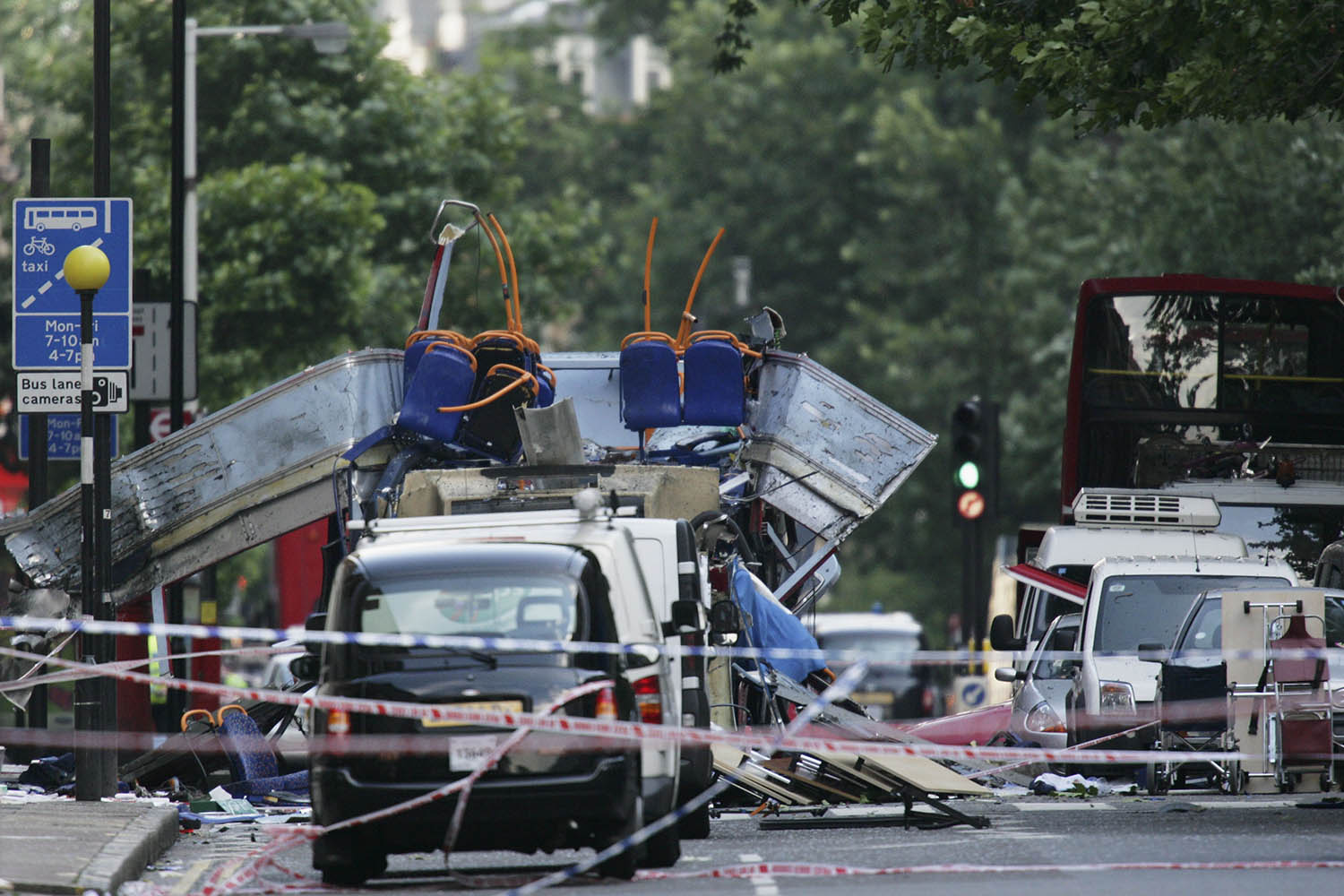The first explosion took place at 08:49 in carriage two of the eastbound Circle line train 204, travelling from Liverpool Street to Aldgate station. At 08:51 there was a second blast, this time on Circle line train 216, travelling westbound from Edgware Road to Paddington. Two minutes later, a third bomb ripped through the front carriage of Piccadilly line train 311 between King’s Cross and Russell Square. At 09:47, an explosion tore the roof from a packed number 30 bus in Tavistock Square.
Three Weeks in July is a meticulously assembled and grippingly told account of the biggest act of murder on English soil since the second world war. Soon shorthanded as the “7/7” bombings, the atrocities on three London underground trains and a double-decker bus on 7 July 2005 left 52 people dead and almost 800 injured. A copycat attack a fortnight later was only stymied because the bombmaker, who’d failed his maths GCSE, had slightly miscalculated the ratio of ingredients for the explosive devices. Those of us who were in London at the time remember the usually stoical capital, which the day before had been celebrating its successful bid to host the 2012 Olympics, becoming exceptionally edgy over those three weeks.
One thing to admire about this book is the care it takes to explore the backgrounds of the suicide bombers, whose numbers included a teaching assistant, a barman and a small-time gangster. This way we better understand the biographical and international forces that shaped eight young British citizens into men intent on mass murder. Mohammad Sidique Khan, the ringleader of the 7/7 bombers, had been known to friends as “Sid” since his teens. He was “very British”: educated at South Leeds high school before studying business at Leeds Metropolitan University. As a youth worker, he championed local kids who stayed in education and arranged camping and white-water rafting for them. Some parents suspected Khan of trying to recruit impressionable teenagers to the jihadist cause, but decided “Better them being Wahhabi than on drugs.” He took a small party of Yorkshire kids on a visit to the House of Commons, where they met their MPs. Less than a year later, he had turned a flat on the Chapeltown Road into a bomb factory.
This account is most compelling when it retells events from the perspective of those who endured the horrors. The authors strike the right tone: they don’t egregiously dwell on the carnage, but nor do they swerve its grimness. The testimony of survivors includes the account of Martine Wright, a textbook cockney and self-professed “girl about town” who’d celebrated London securing the 2012 Games by “engaging in some Olympian-scale boozing”. When her alarm went off at 7am on 7 July, she hit the snooze button. That was the fateful decision that put her on Circle line train 204 when the bomb exploded. “We went into the tunnel and it must have been no more than 15 seconds later when this huge white light was in front of my eyes. I don’t remember a noise. What I do remember are the images,” she recounts. “I remember looking at this hole in the side of the carriage and thinking, It’s a window. Then I remember looking up and I could see my trainer up there in the twisted metal. I remember thinking, What’s my new trainer doing up there? Except, it wasn’t pristine white any more. It was red.”
Danny Biddle, aboard Circle line train 216, observes: “People say that life flashes before your eyes. It does, but not in the way you expect. You don’t think about all the things that you’ve done, you think about the things that you’re not going to do.”
‘Your life does flash before your eyes,’ says one victim, ‘but you think of all the things you won’t do’
Could the UK have been better prepared for this kind of attack? The agencies paid to protect us knew that there was an escalating menace. They also grasped that the threat was different in nature to that of the IRA, whose modus operandi was to plant bombs, sometimes make a warning call and then melt away. The old-school terrorists didn’t want to die themselves.
The government, intelligence services, police and NHS had made contingency plans for suicide attacks with chemical, biological and even nuclear devices. Real-time exercises had been conducted to rehearse how the different agencies would work together. Yet some of the basics had not been covered. The effort to come to the aid of victims of 7/7 was complicated by communications problems because the radios used by emergency services didn’t work effectively underground. Nearly an hour passed before the machinery of state fully grasped that they were dealing with terrorism. The authorities responsible for counter-terrorism had detected and thwarted other bombing plots, including ones targeting the Bluewater shopping centre in Kent and the Ministry of Sound nightclub in London. Khan had come to the attention of MI5, but the agency did not judge him a likely threat and had not put him under surveillance. The authors, who are fair-minded about the resource pressures on the agency, do not point a finger of blame.
The picture painted of the Metropolitan police is less flattering. We see the capital’s police force at its best during the investigation in the wake of 7/7 and the frantic manhunt that followed the failed attacks of 21/7. Four suicide bombers were on the loose, one of them fleeing as far as Rome before he was apprehended. The account of how they were tracked down has the twisty pace of a first-class thriller. We are placed by the side and in the heads of officers as they approach buildings that may or may not contain a suicide bomber and which may or may not be rigged to explode.
We also see the Met at its worst in the wake of the most notorious UK police shooting of all time. Thinking they had cornered one of the suicide bombers, firearms officers boarded a tube train at Stockwell station and put seven bullets into the brain of Jean Charles de Menezes, an entirely innocent Brazilian electrician. If that might be explained as a horrendous but honest mistake, there is absolutely no excuse for the disgusting attempt to warp the narrative about this killing by smearing his name. It was claimed that he was wearing a suspiciously bulky jacket, jumped the ticket barriers, wasn’t legally entitled to be in the UK, and ran from the police before he was shot dead. None of this was true.
Tony Blair has always been prickly about the accusation that you can join the dots between terrorist atrocities and his decision to join the invasion of Iraq in 2003. What cannot be denied is that some of the bombers cited the Iraq conflict as a justification. It also can’t be disputed that these attacks undermined Blair’s case that making war in the Middle East would make Britain safer. A stand-out quote in this superb book comes from Eliza Manningham-Buller, head of MI5 at the time. “Terrorism is resolved through politics and economics, not through arms and intelligence, however important a role these play.” Contemplating where we are today, we can’t say that everyone in authority has learned that lesson.
Order Three Weeks in July from observershop.co.uk to receive a 10% discount. Delivery charges may apply
Photograph by Getty Images

